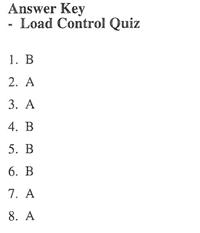Just when we think all of the possible methods for rigging a particular load have been tried, along comes another system that requires consideration.
Each system will fall into the good or bad category. Industrial Training International teaches riggers that there may be four or five good ways to rig a given load and a few very hazardous ways. We want riggers to be creative in designing safe and efficient rigging techniques.
Every time a load is rigged, the rigger must assess the load's approximate weight, its center-of-gravity, the available pick points and their strength, and the overall structural integrity of the load. The rigger should also determine if the slings can slide around the load or unexpectedly over the hook.
Once a technique is decided upon, the rigger should be able to defend this rigging decision. The following workshop helps instill the concept that there may be a thin line between a load being well rigged and one that is marginal or even hazardous. Can you determine the "better" technique which should lead to a successful load move? Can you tell from these simple line drawings which technique in each box would be the preferred method?
Review these techniques and identify the "better" technique in each box. Compare your answers to the Answer Key below. Load control is a key component of the Intermediate Rigging Training Course at ITI.
Happy trails to all my crane and rigging friends,
Mike Parnell
ITI-Field Services
P.S. This article was originally published in The Professional Rigger Newsletter - Better Load Control.





COMMENTS